|
Books Should Be Free Loyal Books Free Public Domain Audiobooks & eBook Downloads |
|
|
Books Should Be Free Loyal Books Free Public Domain Audiobooks & eBook Downloads |
|
History Books |
|---|
|
Book type:
Sort by:
View by:
|
By: Various | |
|---|---|
 Myths and Legends Around the World - Collection 07
Myths and Legends Around the World - Collection 07
This collection is dedicated to recordings of short mythical or legendary works which are in the Public Domain. The stories tell of legends, heroes, myths, and ancient lore from many different cultures. | |
 Myths and Legends Around the World - Collection 08
Myths and Legends Around the World - Collection 08
This collection is dedicated to recordings of short mythical or legendary works which are in the Public Domain. The stories tell of legends, heroes, myths, and ancient lore from many different cultures. | |
 Cambridge Modern History. Volume 03, The Wars of Religion
Cambridge Modern History. Volume 03, The Wars of Religion
The Cambridge Modern History is a universal history covering the period from 1450 to 1910. It was published in 14 volumes between 1902 and 1912. The series was planned by Lord Acton, who intended it to be a monument of objective, collaborative scholarship, and edited by A.W. Ward, G. W. Prothero and Stanley Leathes. From the preface: "The present volume, as its title imports, relates a complicated series of conflicts of which the origin or the pretext has for the most part to be sought in the great religious schism with which the preceding volume was concerned... | |
 Myths and Legends Around the World - Collection 10
Myths and Legends Around the World - Collection 10
This collection is dedicated to recordings of short mythical or legendary works which are in the Public Domain. The stories tell of legends, heroes, myths, and ancient lore from many different cultures. | |
 Myths and Legends Around the World - Collection 11
Myths and Legends Around the World - Collection 11
This collection is dedicated to recordings of short mythical or legendary works which are in the Public Domain. The stories tell of legends, heroes, myths, and ancient lore from many different cultures. | |
 Myths and Legends Around the World - Collection 12
Myths and Legends Around the World - Collection 12
This collection is dedicated to recordings of short mythical or legendary works which are in the Public Domain. The stories tell of legends, heroes, myths, and ancient lore from many different cultures. | |
 Myths and Legends Around the World - Collection 13
Myths and Legends Around the World - Collection 13
This collection is dedicated to recordings of short mythical or legendary works which are in the Public Domain. The stories tell of legends, heroes, myths, and ancient lore from many different cultures. | |
 Myths and Legends Around the World - Collection 14
Myths and Legends Around the World - Collection 14
This collection is dedicated to recordings of short mythical or legendary works which are in the Public Domain. The stories tell of legends, heroes, myths, and ancient lore from many different cultures. | |
 Myths and Legends Around the World - Collection 15
Myths and Legends Around the World - Collection 15
This collection is dedicated to recordings of short mythical or legendary works which are in the Public Domain. The stories tell of legends, heroes, myths, and ancient lore from many different cultures. | |
 Civil War Women, North And South
Civil War Women, North And South
This recording comprises two narratives. One is by Cora Mitchel who in 1861 was a girl in her mid-teens. Her Unionist family escaped the Confederacy from their home in south Georgia to Rhode Island. This is her story written about 1916. The second narrative is by Charlotte St. Julien Ravenel of South Carolina, a contemporary journal written in the closing months of the civil war in 1865. - Summary by David Wales | |
 Myths and Legends Around the World - Collection 16
Myths and Legends Around the World - Collection 16
This collection is dedicated to recordings of short mythical or legendary works which are in the Public Domain. The stories tell of legends, heroes, myths, and ancient lore from many different cultures. | |
By: Victor Hugo (1802-1885) | |
|---|---|
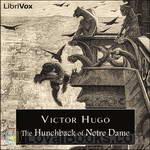 The Hunchback of Notre Dame
The Hunchback of Notre Dame
One of the great literary tragedies of all time, The Hunchback of Notre Dame features some of the most well-known characters in all of fiction - Quasimodo, the hideously deformed bellringer of Notre-Dame de Paris, his master the evil priest Claude Frollo, and Esmeralda, the beautiful gypsy condemned for a crime she did not commit. | |
 Toilers of the Sea (Version 2)
Toilers of the Sea (Version 2)
The book is dedicated to the island of Guernsey, where Victor Hugo spent 15 years in exile. Hugo uses the setting of a small island community to convert seemingly mundane events into drama of the highest caliber. Set just after the Napoleonic Wars, Toilers of the Sea deals with the impact of the Industrial Revolution upon the island. The story concerns a Guernseyman named Gilliatt, a social outcast who falls in love with Deruchette, the niece of a local shipowner, Mess Lethierry. When Lethierry's ship is wrecked on a perilous reef, Deruchette promises to marry whoever can salvage the ship's steam engine... | |
By: Vladimir Ilyich Lenin (1870-1924) | |
|---|---|
 Two Tactics of Social-Democracy in the Democratic Revolution
Two Tactics of Social-Democracy in the Democratic Revolution
In the heat of the failed 1905 revolution in Russia, Lenin here contrasts the precision of the Bolshevik political program and tactics with various inconsistent and servile factions within the Russian Social-Democratic Labor Party. | |
By: Voltairine de Cleyre (1866-1912) | |
|---|---|
 Selected Works: Haymarket Speeches
Selected Works: Haymarket Speeches
Voltairine de Cleyre (November 17, 1866 – June 20, 1912) was an American anarchist. She was skilled in many subjects and wrote essays, poems, letters, sketches, stories and speeches. These are her selected Haymarket speeches. | |
By: W. H. Koebel | |
|---|---|
 South America
South America
THE MAKING OF THE NATIONS, SOUTH AMERICABY W.H. KOEBELPREFACEThe history of a continent such as South America, confined to the limits of a single volume of moderate size, must of necessity contain some elements of mere survey. Nevertheless, since in no other but a condensed form could the respective strides achieved by the various nations of this continent be satisfactorily judged and compared, the author is encouraged to hope that this small work may fill in one of the most obvious of the many gaps in the English versions of South American history... | |
By: W. L. Hunter | |
|---|---|
 Jesus Christ Had Negro Blood in His Veins
Jesus Christ Had Negro Blood in His Veins
This short work attempts to establish that Jesus had black ancestry dating back to Ham, the son of Noah, who had been made black-skinned as a punishment for having seen his father naked. Furthermore, Canaanites are here also identified as being black, and according to the author, several important Jewish figures and ancestors of Jesus had children by this group of people. - Summary by Jim Locke | |
By: W. M. Flinders Petrie | |
|---|---|
 Egyptian Tales, translated from the Papyri, Series One
Egyptian Tales, translated from the Papyri, Series One
Brief, and in some cases incomplete, stories of magic from ancient Egypt. | |
By: W. Max Reid (1839-1911) | |
|---|---|
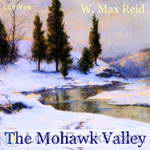 The Mohawk Valley
The Mohawk Valley
An in-depth view and early history of the Mohawk Valley in upper New York state, covering the time period of 1609-1780. This historical piece covers that part of the Mohawk Valley between Schenectady and Rome, NY.The narrator hopes that the listener understands that a best effort has been made in pronunciation of many names within this work; particularly those of the Mohawks, Iriquois, Huron, and Mohicans; as well as the French and Dutch. | |
By: W. O. E. Oesterley (1866-1950) | |
|---|---|
 Immortality and the Unseen World
Immortality and the Unseen World
The full title of this book is Immortality and the Unseen World - A Study in Old Testament Religion. Oesterley describes the beliefs that pre-Christian Hebrews and Semites held regarding the afterlife and the immortal nature of humans. The nature, form and evolution of these beliefs are derived from the Tanakh (Old Testament), comparisons with the beliefs and mythologies of neighboring cultures, and archeological finds. To develop a full study, additional beliefs of these people are also considered, including the beliefs of the constituent parts of humans; demonology, angelology, shades and the Satan; the home of the dead, ancestor worship, necromancy, and burial customs... | |
By: W. S. B. Mathews (1837-1912) | |
|---|---|
 Popular History of the Art of Music
Popular History of the Art of Music
Preface by W.S.B. Mathews: I have here endeavored to provide a readable account of the entire history of the art of music, within the compass of a single small volume, and to treat the luxuriant and many-sided later development with the particularity proportionate to its importance, and the greater interest appertaining to it from its proximity to the times of the reader.The range of the work can be most easily estimated from the Table of Contents (pages 5-10). It will be seen that I have attempted to cover the same extent of history, in treating of which the standard musical histories of Naumann, Ambros, Fétis and others have employed from three times to ten times as much space... | |
By: W. S. Gilbert (1836-1911) | |
|---|---|
 Mikado, Or The Town of Titipu (version 2)
Mikado, Or The Town of Titipu (version 2)
In the town of Titipu, flirting is punishable by death on the command of the Mikado himself! But what happens when the Lord High Executioner is himself condemned to die? And what secret does the wandering minstrel Nanki-Poo hide, that the Mikado and his entire entourage come to witness his execution? "The Mikado" premiered in 1885, when it broke all records for the longest-running musical. It remains arguably the most popular of the Gilbert & Sullivan operettas. Occasionally described as "English ladies with knitting needles in their hair", Gilbert disguised his criticism of British politics by the Japanese setting... | |
By: W. Stewart Wallace (1884-1970) | |
|---|---|
 Chronicles of Canada Volume 24 - The Family Compact: A Chronicle of the Rebellion in Upper Canada
Chronicles of Canada Volume 24 - The Family Compact: A Chronicle of the Rebellion in Upper Canada
The Rebellions of 1837–1838 were two armed uprisings that took place in Lower Canada and Upper Canada . The rebellions were motivated by frustrations over lack of political reform. A key goal was responsible government, which was eventually achieved in the incidents' aftermath. The Upper Canada Rebellion took place in December 1837. The "Family Compact" in the title wasn't familial at all, but rather a group of political elites - not all gifted or savvy; simply the "in" people - who had firm control of the government of Upper Canada at the time. - Summary by TriciaG | |
By: Walt Whitman (1819-1892) | |
|---|---|
 Leaves of Grass
Leaves of Grass
Nearly 160 years after it was first published, Walt Whitman's Leaves of Grass continues to inspire, enthrall and educate generations of readers. This collection of poems serves as a vehicle for Whitman's philosophy, ideals, love of nature and mystical musings and it subsequently became one of the corner stones of American literature. Whitman was inspired to write Leaves of Grass based on Ralph Waldo Emerson's clarion call for a truly American poet who would tell of its glories, virtues and vices... | |
By: Walter A. Wyckoff (1865-1908) | |
|---|---|
 Workers - An Experiment in Reality: The West
Workers - An Experiment in Reality: The West
A young scholar, recently graduated from Princeton College, travels across the United States as a member of the working class, taking any job he could find, enduring hardships and struggling to make a living. He travelled mainly on foot, designing for himself a social experiment on experiencing different class and culture structures and the reality of working conditions at the end of the 19th century. This volume continues the story that began in the first volume , and spans the region from Illinois to California - Summary by Phyllis Vincelli | |
By: Walter Besant (1836-1901) | |
|---|---|
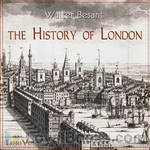 The History of London
The History of London
Walter Besant was a novelist and historian, and his topographical and historical writings, ranging from prehistoric times to the nineteenth century, were probably best known through the detailed 10-volume Survey of London published after his death. This earlier single volume covers, in less depth, the whole period from prehistory until the 19th century. The book appears originally to have been written for boys, and, indeed, the chapters are called “Lessons”. However, it is a very readable history and provides a fascinating insight into both London’s past and the government of the City at the time the book was written (1894). | |
 Captain Cook
Captain Cook
James Cook , British explorer, navigator, cartographer, and captain in the Royal Navy was the son of a farm laborer. Apprenticed to a grocer, he ran away to sea. He saw hard service in the Baltic as a merchant seaman, while applying himself to the study of mathematics, navigation, and astronomy. In 1755 he volunteered for the Royal Navy, working his way up to captain. This little biography by Walter Besant, chronicles Cook's three voyages of discovery and his violent death in Hawaii. Cook replaced vague mythology with accurate observations of people and places, animals and plants... | |
 Fifty Years Ago
Fifty Years Ago
Sir Walter Besant was a prolific novelist and historian. He wrote Fifty Years Ago to present a picture of life, manners, and society in Great Britain as it was when Queen Victoria ascended to the throne. In 1837, the seeds of new technology and new ideas were present and monumental changes from the ways of the 1700's were about to be felt. Starting first in London and over several decades, the progress moved outwards to the country towns of the British Isles. - Summary by Gary Clayton | |
By: Walter George Bell (1867-1942) | |
|---|---|
 Unknown London
Unknown London
Herein you will find much concerning those things which everybody knows about, but nobody knows — the things you have known about since childhood, and have been content to leave them at that, knowing little of what they are and still less where they are to be found. I have dealt mostly with the big things that London has in its keeping, such as the Domesday Book (can you tell me off-hand where it is to be seen ?); with the Confessor's Shrine (of the crowds who enter Westminster Abbey there is a... | |
 Tower of London
Tower of London
A short book, whose chapters were originally published in The Daily Mail, which explores the history and facts of each of the structures that make up the Tower. - Summary by Janet 99 | |
 More About Unknown London
More About Unknown London
If you enjoyed Unknown London by this author, then you should love this one! Bell's light and novel exploration of specific topics in London's history make this easy to listen to and factual. Seventeen new topics are examined in this book, including Anne Boleyn's letter, tombstone stories, and St. Martin-Le-Grand. - Summary by Janet | |
By: Walter Pater | |
|---|---|
 Appreciations, with an Essay on Style
Appreciations, with an Essay on Style
Appreciations, with an Essay on Style, is a collection of Walter Pater's previously-published essays on literature. The collection was well received by public and critic since its first edition, in 1889. The volume includes an appraisal of the poems of Dante Gabriel Rossetti, first printed in 1883, a few months after Rossetti's death; an essay on Thomas Browne, whose Baroque style Pater admired; and a discussion of Measure for Measure, one of Pater's most often reprinted pieces. The second edition, published in 1890, had a few modifications, and is the basis for all other editions of the book. | |
By: Walter Stevens Herrington (1860-1947) | |
|---|---|
 Pioneer Life Among The Loyalists In Upper Canada
Pioneer Life Among The Loyalists In Upper Canada
What became of the citizens who remained loyal to the Crown when the thirteen British colonies rebelled against England – and won! These Loyalists suffered discrimination and persecution in the nation aborning. Thousands of them left their homes for England; other thousands left for Canada and other British colonies. This book is about the Loyalists who settled in Upper Canada. “To present a picture of the early settlements of Ontario and enter into the daily life of the pioneers is a most fascinating task…. in our search for information concerning the evolution of the homestead, and the customs and peculiarities of the common folk of long ago.“ | |
By: Walter W. Bryant (1865-1923) | |
|---|---|
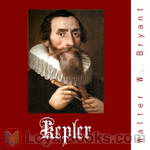 Kepler
Kepler
This biography of Johannes Kepler begins with an account of what the world of astronomy was like before his time, then proceeds to a look at his early years. Two chapters deal with his working relationship with Tycho Brahe. These are followed by a look at Kepler's laws and his last years. | |
By: Walter Waddington Shirley (1828-1866) | |
|---|---|
 Scholasticism: A Lecture Delivered Before the University of Oxford
Scholasticism: A Lecture Delivered Before the University of Oxford
Walter Waddington Shirley was made Regius Professor of Ecclesiastical History and Canon of Christ Church, Oxford in 1863. This short work comprises the text of a lecture he gave at Oxford University in January, 1866. In it, he describes the historical setting in which scholasticism flourished and then summarizes its features. - Summary by Barry Ganong | |
By: Ward Hill Lamon (1828-1893) | |
|---|---|
 Recollections of Abraham Lincoln 1847-1865
Recollections of Abraham Lincoln 1847-1865
Abraham Lincoln came to the presidency under a heavy shroud of uncertainty, not only about his threatened life but, of course, the very existence of the United States, which was already falling apart. Ward Hill Lamon was, in effect, his first Secret Service agent, his security guard and this biography, heavily edited by his daughter, Dorothy Lamon sets down for posterity many details surrounding Lincoln's near-fatal journey to his inauguration, how he dealt with day to day presidential decisions and a wide range of interpersonal relationships with the visionaries, schemers and power brokers surrounding him. - Summary by John Greenman | |
By: Ward Muir (1878-1927) | |
|---|---|
 Observations of an Orderly
Observations of an Orderly
Ward Muir brings us into the heart of an English war hospital, describing scenes of cleanliness, triumph, order and sadness. Through the eyes of the orderly we get to see the processes that kept the wards running, and relive some tales from within the hospital walls. | |
By: Washington Irving (1783-1859) | |
|---|---|
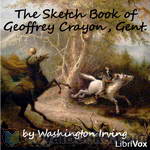 The Sketch Book of Geoffrey Crayon, Gent.
The Sketch Book of Geoffrey Crayon, Gent.
Apart from "Rip Van Winkle" and "The Legend of Sleepy Hollow" - the pieces which made both Irving and The Sketch Book famous - other tales include "Roscoe", "The Broken Heart", "The Art of Book-making", "A Royal Poet", "The Spectre Bridegroom", "Westminster Abbey", "Little Britain", and "John Bull". His stories were highly influenced by German folktales, with "The Legend of Sleepy Hollow" being inspired by a folktale recorded by Karl Musaus. Stories range from the maudlin (such as "The Wife" and... | |
 The Alhambra: A Series of Tales and Sketches of the Moors and Spaniards
The Alhambra: A Series of Tales and Sketches of the Moors and Spaniards
This is a collection of essays, verbal sketches, and stories by Washington Irving. Irving lived at the Alhambra Palace while writing some of the material for his book. In 1828, Washington Irving traveled from Madrid, where he had been staying, to Granada, Spain. At first sight, he described it as "a most picturesque and beautiful city, situated in one of the loveliest landscapes that I have ever seen." He immediately asked the then-governor of the historic Alhambra Palace as well as the archbishop of Granada for access to the palace, which was granted because of Irving's celebrity status... | |
By: Watkin Tench (1758-1833) | |
|---|---|
 A Narrative of the Expedition to Botany-Bay
A Narrative of the Expedition to Botany-Bay
Watkin Tench was an officer of the British Marines in the First Fleet to settle NSW. This is an interesting and entertaining account of his experiences during that time (Introduction by Tabithat) | |
By: Wayne Whipple (1856-1942) | |
|---|---|
 Story of Young Abraham Lincoln
Story of Young Abraham Lincoln
This is a careful and fascinating collection of interviews with people who knew Lincoln as a boy and young man. A glimpse into the type of person he was from the very beginning. "All the world loves a lover"—and Abraham Lincoln loved everybody. With all his brain and brawn, his real greatness was in his heart. He has been called "the Great-Heart of the White House," and there is little doubt that more people have heard about him than there are who have read of the original "Great-Heart" in "The Pilgrim's Progress... | |
By: Wilbur D. Nesbit (1871-1927) | |
|---|---|
 An Alphabet of History
An Alphabet of History
An alphabet of historical characters presented in poetical form!In their original form, the contents of this book appeared in the Chicago Sunday Tribune, which newspaper is hereby thanked for the privilege of reproducing this Alphabet | |
By: Wilbur Fisk Gordy | |
|---|---|
 Stories of Later American History
Stories of Later American History
STORIES OF LATER AMERICAN HISTORYBy WILBUR F. GORDYPREFACEThis book, like Stories of Early American History, follows somewhat closely the course of study prepared by the Committee of Eight, the present volume covering the topics outlined for Grade V, while the earlier one includes the material suggested for Grade IV. It was the plan of that committee to take up in these grades, largely in a biographical way, a great part of the essential facts of American history; and with this plan the author, who was a member of that committee, was in hearty accord... | |
By: Wilhelm Wägner (1800-1886) | |
|---|---|
 Epics and Romances of the Middle Ages
Epics and Romances of the Middle Ages
This volume contains the principal hero-lays of the six great epic cycles of the Teutonic Middle Ages: The Langobardian Legends, the Amelung and Kindred Legends; Dietrich of Bern's Adventures; the Nibelung Legends; the Hegeling Legends; and Beowulf. To them, the author has added the great mythical Carolingian cycle, which centred round the persons of Charlemagne and his heroes, and the Breton ones of King Arthur and his Knights of the Round Table, as well as the legend of the Holy Grail. Therefore, this one book tells all of the great epic and romances of the Middle Ages in accessible language for the general public. | |
By: Willard Glazier (1841-1905) | |
|---|---|
 Three Years in the Federal Cavalry
Three Years in the Federal Cavalry
Captain Glazier narrates his experiences as a cavalryman in the Federal Army during the Civil War, from his enlistment in New York State to his capture at the battle of Brandy Station. | |
By: William Platt | |
|---|---|
 Stories of the Scottish Border
Stories of the Scottish Border
Nothing seems to be known about Mr and Mrs William Platt, the writers of Stories of the Scottish Border. What they produced is an eccentric guidebook and history, seen partly through the ballads of the region. The book recounts the military stratagems, treachery and courage of those who struggled for control of the Border lands and of the whole country, and tells of the triumphs or tragic fate of those who took part on both sides. It also tells us stories of the Border Reivers, raiders who lived by riding out and stealing their neighbours’ livestock... | |
By: William A. Sinclair (1858-1912) | |
|---|---|
 Aftermath of Slavery
Aftermath of Slavery
This work describes conditions and forces the black population of the South faced after freedom was brought by the Civil War. As Sinclair puts it at the outset of his book, ". . . the chief efforts of Southern leadership have been to curtail the freedom of the colored people, to minimize their liberty and reduce them as nearly as possible to the condition of chattel slaves." - Summary by Jim Locke | |
By: William Alexander MacKay (1842-1905) | |
|---|---|
 Zorra Boys at Home and Abroad, or, How to Succeed
Zorra Boys at Home and Abroad, or, How to Succeed
By Zorra, in the following sketches, is meant a little district in Oxford county, Ontario, some ten miles square, composed of part of East and part of West Zorra, and containing a population of about fourteen hundred. It was settled about the year 1830, chiefly by Highlanders from Sutherlandshire, Scotland.Within the last forty years there have gone from this district over one hundred young men who have made their mark in the world. With most of these it has been the writer's good fortune to be personally and intimately acquainted; and companionship with some of them has been to him a pleasure and a benefit... | |
By: William Allison Sweeney | |
|---|---|
 History of the American Negro
History of the American Negro
History Of The American Negro In The Great World WarHis Splendid Record In The Battle Zones Of Europe By W. Allison Sweeney Contributing Editor Of The Chicago Defender. CHAPTER I. SPIRITUAL EMANCIPATION OF NATIONS. The march of civilization is attended by strange influences. Providence which directs the advancement of mankind, moves in such mysterious ways that none can sense its design or reason out its import. Frequently the forces of evil are turned to account in defeating their own objects. Great tragedies, cruel wars, cataclysms of woe, have acted as enlightening and refining agents... | |
By: William Beatty, M.D. (1773-1842) | |
|---|---|
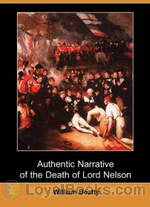 The Death of Lord Nelson
The Death of Lord Nelson
“The Surgeon of the late illustrious Lord NELSON feels himself called upon, from the responsible situation which he held on the eventful day of the 21st of October 1805, to lay before the British Nation the following Narrative. It contains an account of the most interesting incidents which occurred on board the Victory. (Lord NELSON’s flag-ship) from the time of her sailing from England, in the month of September, till the day of battle inclusively”. – William Beatty | |
By: William Bligh (1754-1817) | |
|---|---|
 A Voyage to the South Sea
A Voyage to the South Sea
A Voyage to the South Sea, undertaken by command of His Majesty, for the purpose of conveying the Bread-fruit tree to the West Indies, in His Majesty’s ship The Bounty, commanded by Lieutenant William Bligh. Including an account of the Mutiny on board the said ship, and the subsequent voyage of part of the crew, in the ship’s boat, from Tofoa, one of the Friendly Islands, to Timor, a Dutch settlement in the East Indies. | |
By: William Bradford (1590-1657) | |
|---|---|
 Bradford's History of the Plymouth Settlement
Bradford's History of the Plymouth Settlement
The journal of William Bradford, who served five terms as governor of the Plymouth colony, is an indispensable document of the events of early American history. His eyewitness account includes the stories of the Pilgrims’ sojourn in the Netherlands, the voyage of the Mayflower, the hardships of the New World, relations with the Indians, and the colony’s growth from an endangered enterprise to a thriving city. This edition of Bradford’s Of Plimoth Plantation presents the text in language made more accessible to the modern reader | |
By: William Carleton (1794-1869) | |
|---|---|
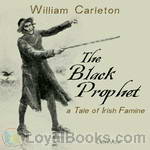 The Black Prophet - A Tale of Irish Famine
The Black Prophet - A Tale of Irish Famine
A story about the Irish, just before the onset of the famine of 1847, with all the color and dialogue of a man who lived it. | |
By: William Caruthers | |
|---|---|
 Loafing Along Death Valley Trails; A Personal Narrative Of People And Places
Loafing Along Death Valley Trails; A Personal Narrative Of People And Places
William Caruthers was a retired newspaperman who spent 25 years listening to stories told by the inhabitants of Death Valley. This 1951 book collects those stories; the printed version has many interesting pictures. ''Of the actors who made the history of the period, few remain. It was the writer’s good fortune that many of these men were his friends. It is the romance, the comedy, the often stark tragedy these men left along the trail which you will find in the pages that follow.'' | |
By: William Coleman (1766-1829) | |
|---|---|
 Collection of the Facts and Documents Relative to the Death of Major-General Alexander Hamilton
Collection of the Facts and Documents Relative to the Death of Major-General Alexander Hamilton
Compiled by William Coleman the first editor of the New York Evening Post, this book includes items that trace a path leading to the death of Alexander Hamilton. Additionally, it includes orations, sermons, and eulogies written about Hamilton's life and character. - Summary by Kristin Hand | |
By: William Cooper Howells | |
|---|---|
 Recollections of Life in Ohio, from 1813 to 1840
Recollections of Life in Ohio, from 1813 to 1840
Recollections of Life in Ohio is the autobiography of William Cooper Howells (1807-1894), father of the American novelist William Dean Howells. The Howells were Welsh woolen mill owners. William Cooper's father brought the family to America in 1808--at a time when Great Britain actually forbid skilled workmen from emigrating, thus putting the father's practical knowledge of mill machinery in great demand. Small scale industries--paper and woolen mills, flour mills, and distilleries were sprouting apace with farms in the newly opened lands of Ohio, where the Howells settled in 1813... | |
By: William Dean Howells (1837-1920) | |
|---|---|
 My Mark Twain
My Mark Twain
William Dean Howells (1837-1920) became fast friends with Mark Twain from the moment in 1869 when Twain strode into the office of The Atlantic Monthly in Boston to thank Howells, then its assistant editor, for his favorable review of Innocents Abroad. When Howells became editor a few years later, The Atlantic Monthly began serializing many of Twain’s works, among them his non-fiction masterpiece, Life on the Mississippi. In My Mark Twain, Howells pens a literary memoir that includes such fascinating scenes as their meetings with former president Ulysses Grant who was then writing the classic autobiography that Twain would underwrite in the largest publishing deal until that time... | |
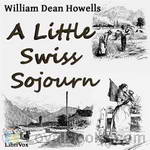 A Little Swiss Sojurn
A Little Swiss Sojurn
A charming brief account of a two months' autumnal stay on the shores of the Lake of Geneva. Howells, who was there with his family traveling from England to Italy, has a sharp eye not only for scenery and architecture, but for people and customs, both Swiss and foreign. | |
By: William Drake Westervelt (1849-1939) | |
|---|---|
 Legends of Old Honolulu
Legends of Old Honolulu
Hawai'i: land of wonder and beauty and a culture rich in history and mythology. Dr. Westervelt settled in Hawai'i as a young man and collected stories and myths from his adopted home. Here we have a collection dedicated to the largest city, Honolulu. - Summary by Lynne Thompson | |
By: William E. B. Du Bois (1868-1963) | |
|---|---|
 The Souls of Black Folk
The Souls of Black Folk
“Few books make history and fewer still become the foundational texts for the movements and struggles of an entire people....” One such great work was The Souls of Black Folk by William EB Du Bois. Published in 1903, it is a powerful and hard-hitting view of sociology, race and American history. It became the cornerstone of the civil rights movement and when Du Bois attended the first National Negro Conference in 1909, he was already well-known as a proponent of full and unconditional equality for African Americans... | |